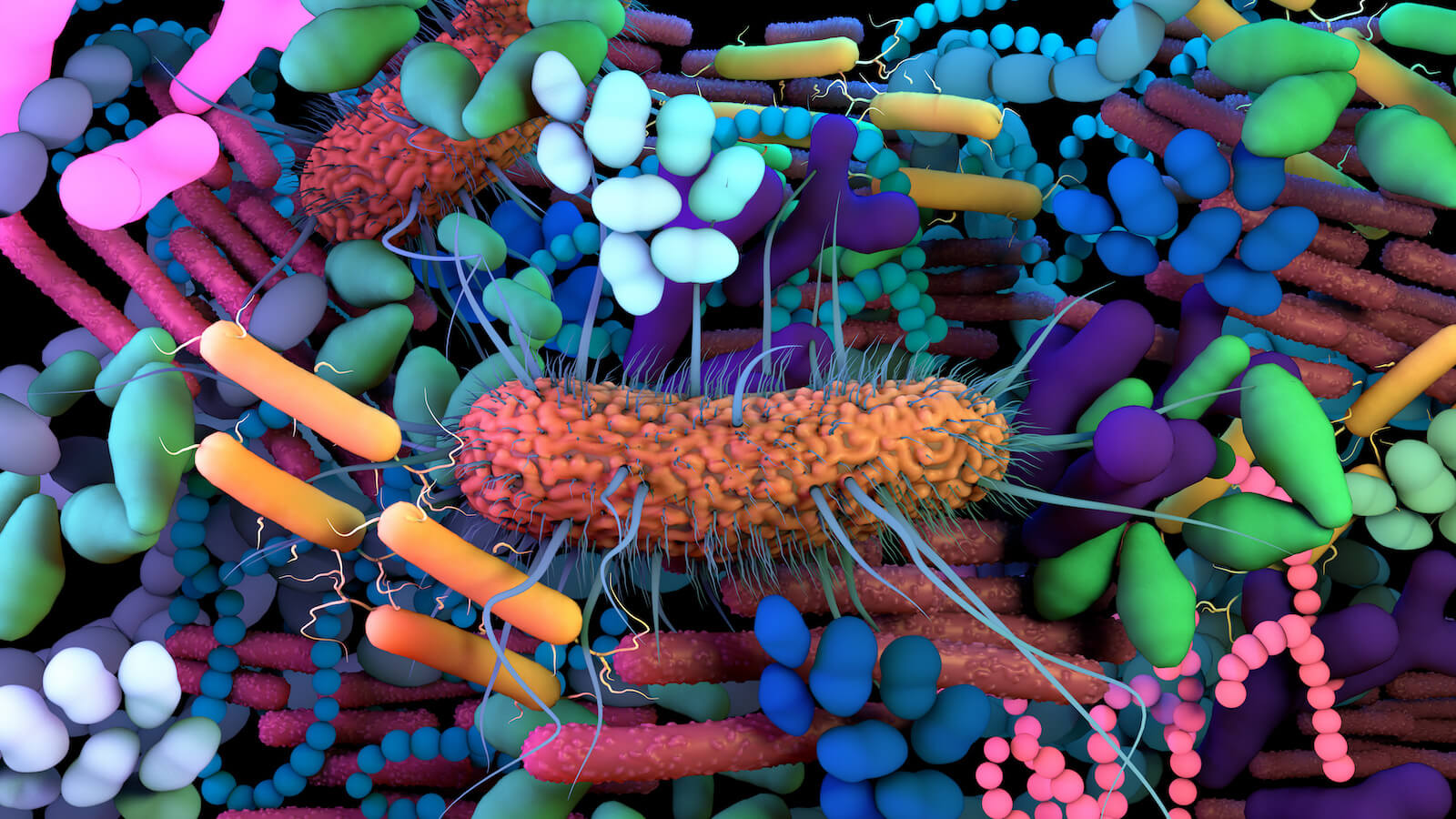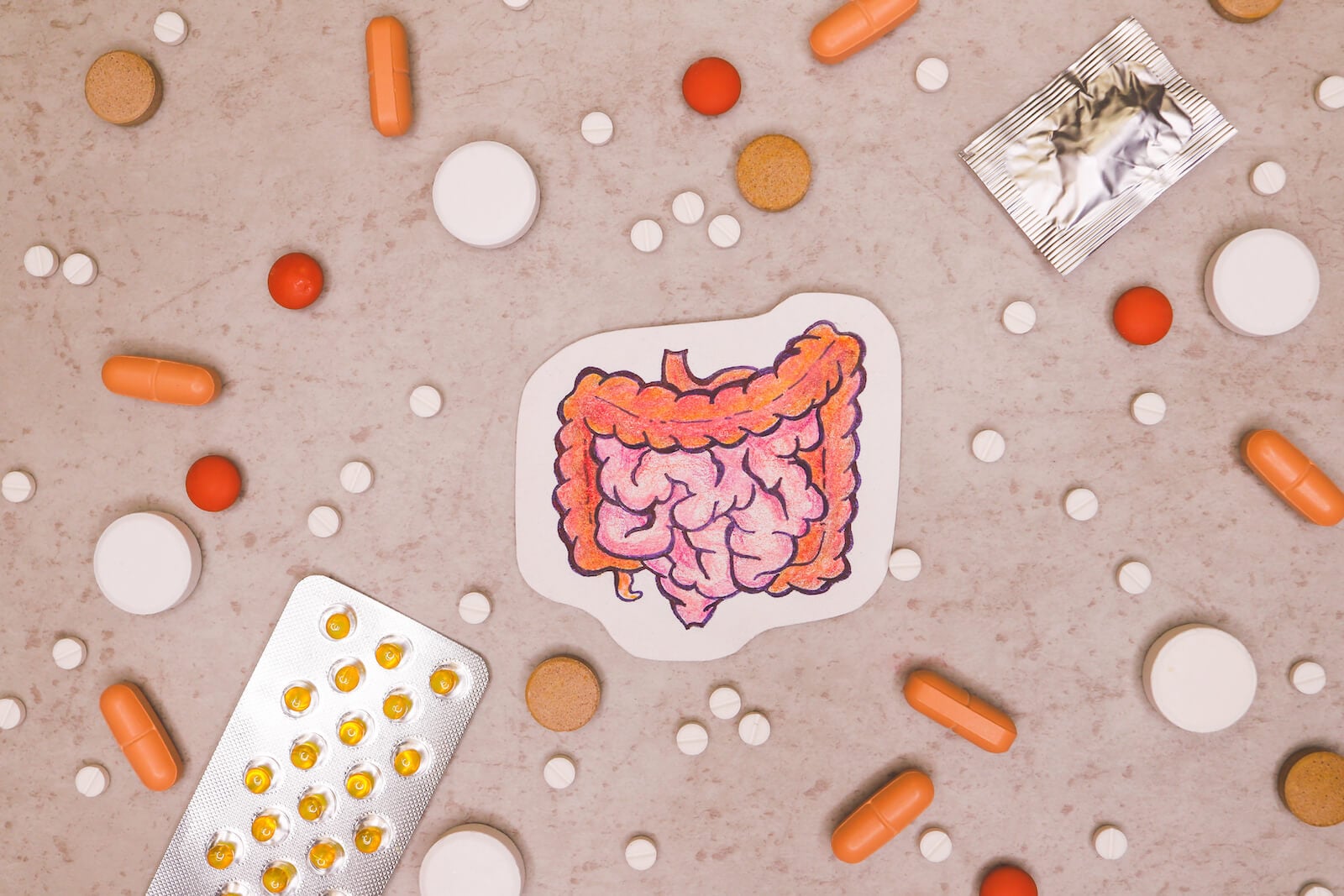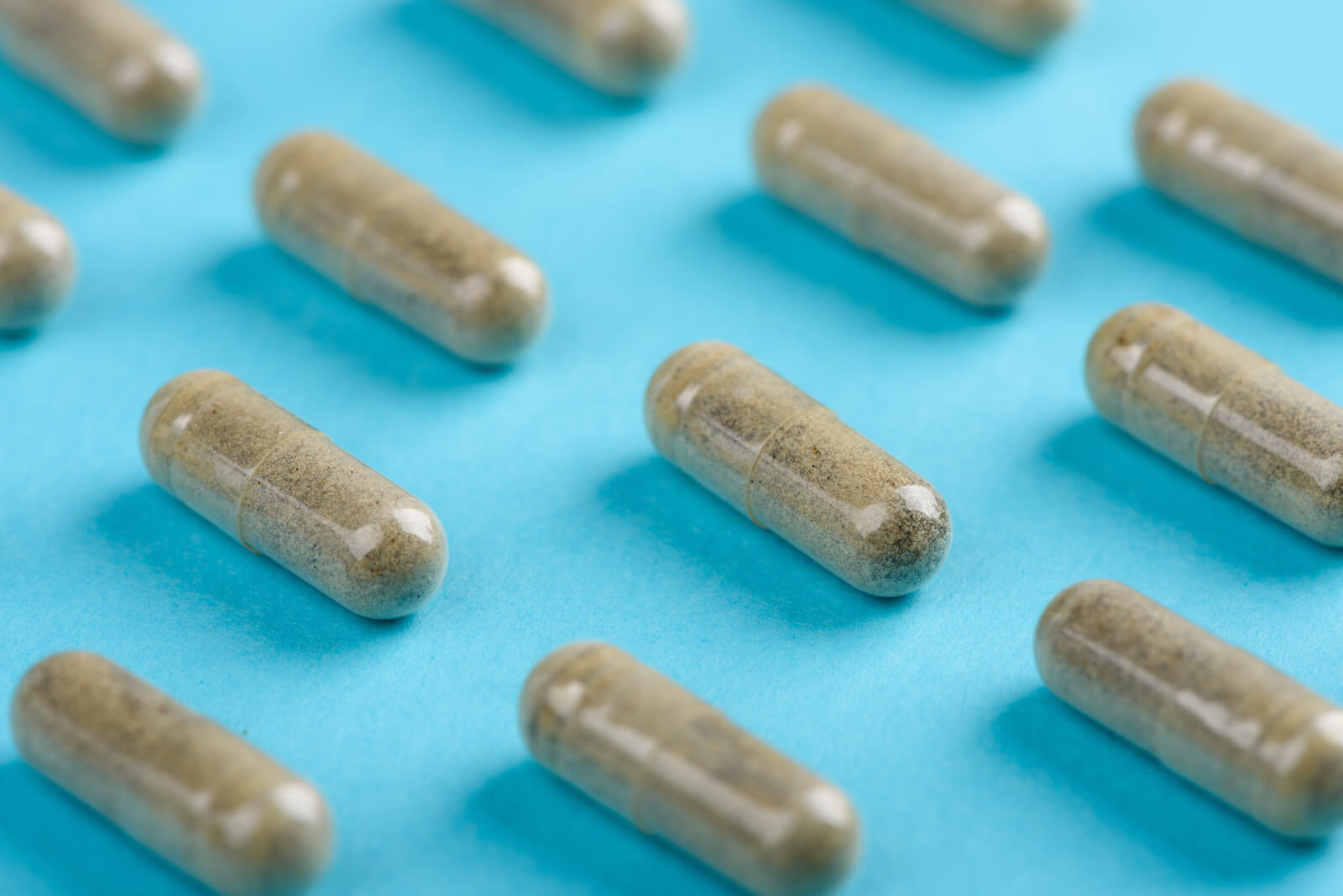What Is a Normal Microbiota of the Gut for Optimal Health?
What You Need to Know About Your Gut Microbiome
- No “Normal” Microbiota|
- Should I Get Microbiome Testing?|
- Gut Testing and Correlation|
- Understanding Gut Microbiome Testing|
- Diseases Associated With Microbiota Changes|
- Treating Gut Dysbiosis|
- Summary|
- We don’t yet know exactly what a “normal” microbiota is.
- Testing your microbiota can be helpful as an indicator of possible disease, but shouldn’t be used alone as a diagnosis.
- We do know that generally, people with chronic illnesses have a lower overall diversity of microbes in their individual gut microbiome.
- Improving the health of your gut microbiota includes improving diet, sleep, and exercise, as well as possibly using some probiotics and herbal antimicrobials if needed.
A healthy gut is essential for overall health, and recent advances in microbiome research and testing have made it possible for all of us to take a closer look at exactly which bacteria and other microbes are living in our gut. But despite the popularity of gut microbiome testing, we don’t have a definitive answer when it comes to what constitutes a “normal” microbiota.
As important as the human gut microbiome is, mapping your microbiome comes with a number of limitations, and can create more questions than answers.
And ultimately, while imbalances in gut bacteria may be associated with chronic illness and symptoms, these imbalances are much more likely to be a secondary effect of a problem than the actual cause. That’s why the best thing you can do for your microbiome is encourage and support a healthy environment with the help of diet, lifestyle factors, probiotics, and more specialized support as needed.
Let’s take a closer look at what we do know about a healthy microbiota, and how you can understand and support yours.

There Is No “Normal” Microbiota
The human body is full of microorganisms (a mix of bacteria, fungi, and archaea) on the epithelial cells of human skin, in the mouth, in your respiratory tract, in your intestinal system, and other mucous membranes of the body [1]. It’s estimated that we have almost a 1:1 ratio of human cells to microbial cells, with a slight lean towards more microbes [1].
It’s not bad to have bacteria; in fact, the human microbiome is in balance when the levels of microorganisms are working well with our body and helping it function.
In this article we’re addressing the gut microbiome. The gut microbiome is the combination of trillions of microorganisms that live in the gut. This mix of bacteria, fungi, archaea, and their genetic material helps our gut and body function correctly.
For example, some bacteria aid us in fermentation and digestion of foods, keeping our gastrointestinal tract working, and helping us get the nutrients we need from our food. Immunity is affected by your gut microbiome, which can contribute to allergies. Improving the gut microbiome may improve allergies by calming an overactive immune response [2]. Bacteria play an important role in our emotional and physical health.
In microbiology, dysbiosis in the gut is when the mix of these microorganisms is out of balance and is associated with certain illnesses and symptoms such as diarrhea, bloating, or constipation.
You may wonder how it can be that there’s no “normal” microbiota [3].
We assume that if we can test for something that there must be normal and abnormal levels of what we’re testing. However, when it comes to the gut microbiome, there are still way too many unknowns.
Advances in microbiome mapping mean that we can measure the levels of different kinds of bacteria and other microbes living in an individual’s gut, and we can compare them to other samples that have been collected from other people’s guts.
We also have some idea of a few of the common differences between the gut microbiomes of those with chronic illnesses and of those who are healthy. For example, those with chronic illnesses have been shown to have less microbial diversity, higher levels of certain kinds of harmful bacteria, and lower levels of certain kinds of healthy bacteria.
However, beyond these few early insights, research isn’t at a stage where we can go further than that or define a normal microbiome.
The study of the microflora of our bodies is relatively new and we haven’t been able to pin down a definition of normal microbiota yet because the diversity in individual and community microbiomes is vast. In fact, groups of people living in different countries have a different beta diversity (diversity of a group of people) microbiome, and we even see a greater beta diversity of the microbiome in foraging people than in westernized communities [4].
It’s helpful to understand that microbiome mapping tests don’t tell us if we have a normal microbiota or a specific disease.
Should I Get Microbiome Testing?
Microbiome testing shouldn’t be your first step to improving symptoms. Testing is expensive and because testing is not diagnostic, it’s better to implement diet and lifestyle changes that we outline later in this article to improve the gut microbiome before we jump to testing.
If you have gastrointestinal symptoms, it’s very likely that your gut microbiome is out of balance for you, and you do not need a test to tell you that.
Rather, your doctor should work with you on decreasing inflammation, improving sleep, and adding in probiotics first. If, after a month or so, your symptoms have not resolved, your doctor may want to get microbiome testing in order to not only check for an imbalance of bacteria, but also if there are any parasites or other pathogens contributing to your symptoms.
Whether or not you get testing is a decision you should make with your functional medicine doctor, and we don’t recommend using at-home tests on your own.

What is Gut Dysbiosis?
Because there’s not a definition for a “normal” or “healthy” microbiome [5], when we talk about dysbiosis, we’re referring to when an altered microbiome is associated with a specific disease or condition as compared to controls of healthy individuals [3].
In our practice, we take a more comprehensive look at gut health that’s not just based on numbers as compared to controls. We also look closely at symptoms and health history in order to determine a treatment plan in any one particular person.
Dysbiosis is often secondary to disease, rather than a main cause of it [5]. Gut dysbiosis may have started due to inflammation, metabolic dysfunction, and even tissue damage. Or, an imbalance in the gut microbiome in the short term, such as from a round of antibiotics, may be contributing to inflammation in the digestive tract [6].
If your doctor sees possible indications of gut dysbiosis based on your symptoms, then you can take steps to improve the health of your gut microbiome without testing. If you change your diet and work to improve your gut microbiome, but still have symptoms after four weeks or so, then your doctor may suggest a stool test to gain more information to help create a comprehensive treatment plan.
Gut Testing Is Based on Correlations, Not Causes (or Solutions)
Gut microbiome mapping can tell you what kinds of microbes are living in your gut, but not why, what that means, or what to do about it.
We should note that certain kinds of gut microbiome tests look for a variety of microorganisms, including parasites and other pathogens. This can be helpful when it comes to diagnosing an outright parasitic infection, although it’s worth noting that some of the organisms listed as “parasites” on microbiome tests are not actually harmful for everyone.
When it comes to bacteria, many kinds of potentially bad species are opportunistic, meaning that these organisms do not cause harm, unless the right conditions allow them to overgrow to the point that they cause illness. The amount needed to cause illness isn’t exactly the same in every person.
For example, a person may have severe and acute vomiting and test as having higher levels of E. coli (Escherichia coli). Based on the combination of symptoms, plus microbiome testing, a doctor may conclude that a person has an E. coli infection and treatment to eradicate E. coli may resolve their acute vomiting.
However, any one person could have higher levels of E. coli and have no symptoms, or lower levels of E. coli that aren’t considered dangerous and be acutely sick. What is “normal” is individual by person and it is affected by our internal and external environment.
What we do know is that generally, for most healthy people, our microbiota is 95% a combination of two bacterial species: Bacteroidetes and Firmicutes [1, 7]. The species of bacteria most often associated with disease are Proteobacteria (which includes Escherichia coli), Verrucomicrobia, Actinobacteria, or Fusobacteria [1].
At the same time, within these phyla there are dozens of different specific bacteria and we don’t know what exact amounts of each bacteria are “normal.”
To understand this a bit better, let’s take a closer look at gut microbiome testing.

Understanding Gut Microbiome Testing
Stool tests for the gut microbiome use gene sequencing and an algorithm that summarizes the DNA of the composition of microbiota in your gut, and compares that to a database of other people’s microbiomes [1]. Not only can these tests give the number of bacteria found per gram in the stool, but they also can look at the genome sequencing.
Research has helped us to understand that there are differences between the microbiomes of those with certain health conditions and those who are healthy. This does not mean that healthy controls have normal flora, rather all this shows us is that people with certain illnesses seem to have similarities in their gut microbiome that are different from what’s found in people without illnesses.
For example, research has shown that people with inflammatory bowel disease (IBD), specifically Crohn’s disease, have higher levels of the proteobacteria Escherichia coli (E. coli), as compared to people without inflammatory bowel disease [8].
When we read research like this — that people with Crohn’s disease tend to have higher levels of E. coli than normal controls — it’s often assumed this means there’s a “normal” microbiome. It can also imply that we can diagnose specific conditions based on bacteria levels in the gut.
However, what the research is really showing is that people with acute, severe symptoms of a certain illness have some similarities to each other in their gut microbiome. And, some of those similarities are different from what we see in people without this condition. What it does not indicate is if an increase or decrease in a bacteria causes an illness [9].
For more details about how gut microbiome testing is done, have a listen to our podcast, Is Functional Medicine Stool Testing Validated? with Dr. David Brady and Tony Hoffman from Diagnostic Solutions Laboratory. Their lab provides the GI-Map stool test and they go in-depth on how the levels of microbes are decided in stool testing, what a positive and negative on a test means, and why there’s currently no definition of “normal” microbiota in any one person.
Here are some key points from the podcast:
- The cutoff ranges for positive or negative may not actually mean there’s a problem in any one person.
- A high level of a certain type of bacteria in a person with no symptoms doesn’t indicate that someone needs to lower levels of said bacteria.
- Pathogenic bacteria are toxin-producing organisms and if the organisms are not producing toxins, then they may not be causing you any ill effects.
- Different bacteria live in different areas of the gastrointestinal tract, from the stomach to the large intestine, small intestine, and colon. The levels that are considered high for any one bacteria are influenced in part by where the bacteria lives.
- Many functional medicine stool tests give a number of bacteria present per gram, as well as note if a level of a bacteria is considered high or low (positive or negative in conventional test results), to help clinicians look at symptoms combined with levels of bacteria.
Now that we understand a bit more about the limitations of gut microbiome testing, let’s look at some of the correlations they’re finding between certain illnesses and differences in gut bacteria.
Diseases Correlated With Microbiome Changes
There are illnesses or conditions that are associated with changes in the microbiome, such as obesity, inflammatory bowel disease, and liver disease, to name a few [1].
Keep in mind that the results from a stool test are correlative and need to be taken in context with the full picture of your symptoms, health history, and lifestyle.
In general, what we do know is that people with acute illness tend to have lower alpha diversity (diversity of bacteria in an individual, as opposed to beta diversity, which would be the diversity in a community of people) of the microbial community in the gut.
While the table below shows differences in particular bacteria, and specific phyla, families, and genera, in specific illnesses, that should not be considered to be bacterial signs of a specific disease or illness. While we can see correlations, no definitive microbiome signature has been found for any particular disease [7].
| Condition or Disease | Microbiota Changes |
| Irritable bowel syndrome (IBS) [10] | Low Lactobacillus and Bifidobacterium High Escherichia coli and Enterobacter |
| Inflammatory bowel disease (IBD) [8] | Crohn’s: • Low Faecalibacterium prausnitzii • High Escherichia coli (E. coli) Ulcerative colitis: • Low genus Akkermansia • High E. coli |
| Helicobacter pylori (H. pylori) [11] | High in phylum, family of Enterobacteriaceae and genus Enterococcus. Low in phylum Firmicutes and genus Lactobacillus Over time, Firmicutes may switch from low to high |
| Nonalcoholic fatty liver disease [12] | Lower overall alpha (individual) diversity in genera (multiple genuses) High Escherichia, Prevotella, Streptococcus Low Coprococcus, Faecalibacteriuam, Ruminococcus |
| Major depressive disorder [13] | Lower overall alpha diversity in genera High Eggerthella, Atopobium, Bifidobacterium Low Faecalibacterium |
| Type-2 diabetes [14] | Lower overall alpha diversity High in Lactobacillus species Low Clostridium and Roseburia species |
| Bipolar disorder [15] | Lower overall alpha diversity Low Ruminococcaceae, Faecalibacterium, and Faecalibacterium prausnitzii |
| Chronic kidney disease [16] | Lower overall alpha diversity High Proteobacteria, Escherichia, Shigella, and Streptococcus Low Roseburia, Faecalibacterium, Pyramidobacter, Prevotella |
| Rheumatoid arthritis [17] | In the gut there is lower alpha diversity In the mucosa of the mouth, there is alpha diversity but low Streptococcus and Haemophilus |
Treating Gut Dysbiosis
While there may not be a normal microbiota, the health of your gut is incredibly important.
In functional medicine, we know that improving the microbiome is not as simple as just killing off the bad bugs or adding in good bugs. The human body is more complex than that. For example, if we just killed off the bad bugs, but we are still eating inflammatory foods — which impairs the immune system — we may end up with overgrowth of bad bacteria again.
At the Ruscio Institute for Functional Medicine, we follow three main steps to treat bacterial imbalances or overgrowths:
- Improve diet, sleep, and exercise to reduce inflammation and support the body.
- Add in triple therapy probiotics to help balance the gut microbiome.
- Add in antimicrobial/antibiotic therapy, when needed (if symptoms have not resolved long term).

1. Diet, Sleep, and Exercise
Try a Paleo diet that removes common inflammatory foods such as gluten, legumes, and dairy. This can help decrease overall levels of inflammation, and help the mucosal lining of the gut heal to allow less bacteria from the intestines to get into the bloodstream.
Some kinds of bacteria are commensal, meaning they benefit and stay alive by living in the gut and feeding off the food therein. Sometimes certain bacteria overgrow (as in the case of SIBO). When this happens, a low FODMAP diet — which restricts certain types of fermentable carbohydrates that feed gut bacteria — is often the best option.
In general, a whole foods, low-processed diet, such as a Mediterranean diet, has been associated with microbiotas rich in anti-inflammatory microbes [18].
Sleep is also incredibly important for overall health, including gut health.
To improve sleep, be sure to get seven to eight hours of sleep a night by having a consistent sleep schedule and shutting off electronics at least an hour before bed.
A review of studies found that active people tended to have more diversity of the microbiome, particularly an increase in gram-positive Firmicutes, which was considered a healthy shift in microbes [19, 20].
If you already exercise, keep it up if you’re feeling good. If it feels like too much exercise, like if you’re doing two-a-day workouts, then take a few more rest days. If you’re new to exercise, start with walking, biking, or running 30 minutes, three times a week, and work up from there, adding in strength training with a coach when you can.

2. Triple Therapy Probiotics
Probiotics are a great way to improve the health of your gut microbiome and improve symptoms. They reduce inflammation and improve the immune system of your gut [21, 22, 23, 24]. This can not only help resolve symptoms of leaky gut, IBS, or IBD, but also help with allergies due to an improved immunity [25, 26].
Probiotics have also been found to be particularly helpful in overgrowth of certain bacteria. For example, in Helicobacter Pylori (H. pylori) and small intestinal bacterial overgrowth (SIBO), probiotics with antibiotics help eradicate the infection better than antibiotics alone, and with less side effects [27, 28, 29, 30].
Most probiotics fall into one of three categories: Lactobacillus and Bifidobacteria blend, Saccharomyces boulardii, and soil-based Bacillus species. The most-effective probiotic interventions have been when all three categories are used [31, 32], thus triple therapy probiotics.
You can start your probiotic blend at the same time you start your Paleo diet, or add probiotics after a few weeks of trying the diet if you’re still having symptoms.

3. Herbal Antimicrobials/Antibiotics
If an anti-inflammatory diet and probiotics do not improve your symptoms, your doctor may want to add in a course of herbal antimicrobials or antibiotics to help eradicate an overgrowth of bacteria [29, 30].
Your Healthy Microbiome
Following these simple steps and getting your gut microbiome back in balance may be an important part of your treatment plan and restoring your health.
Implement better diet, sleep, and exercise, as well as probiotics for about a month, and keep track of your symptoms to note improvements. Most people see a great improvement in symptoms after just a few weeks.
If you don’t improve, then it may be time to reach out to a doctor and talk to them about possible imbalances in your gut microbiome, as well as any other pathogens that may be contributing to your symptoms.
If you’ve tried to improve your gut microbiome on your own but aren’t getting relief from your symptoms, our clinic is here to help. Apply to become a patient, and we would be happy to help you on your journey to health.
The Ruscio Institute has developed a range of high-quality formulations to help our patients and audience. If you’re interested in learning more about these products, please click here. Note that there are many other options available, and we encourage you to research which products may be right for you.
Dr. Michael Ruscio is a DC, natural health provider, researcher, and clinician. He serves as an Adjunct Professor at the University of Bridgeport and has published numerous papers in scientific journals as well as the book Healthy Gut, Healthy You. He also founded the Ruscio Institute of Functional Health, where he helps patients with a wide range of GI conditions and serves as the Head of Research.➕ References
- Allaband C, McDonald D, Vázquez-Baeza Y, Minich JJ, Tripathi A, Brenner DA, et al. Microbiome 101: studying, analyzing, and interpreting gut microbiome data for clinicians. Clin Gastroenterol Hepatol. 2019 Jan;17(2):218–30. DOI: 10.1016/j.cgh.2018.09.017. PMID: 30240894. PMCID: PMC6391518.
- Rinninella E, Raoul P, Cintoni M, Franceschi F, Miggiano GAD, Gasbarrini A, et al. What is the Healthy Gut Microbiota Composition? A Changing Ecosystem across Age, Environment, Diet, and Diseases. Microorganisms. 2019 Jan 10;7(1). DOI: 10.3390/microorganisms7010014. PMID: 30634578. PMCID: PMC6351938.
- McBurney MI, Davis C, Fraser CM, Schneeman BO, Huttenhower C, Verbeke K, et al. Establishing what constitutes a healthy human gut microbiome: state of the science, regulatory considerations, and future directions. J Nutr. 2019 Nov 1;149(11):1882–95. DOI: 10.1093/jn/nxz154. PMID: 31373365. PMCID: PMC6825832.
- Gupta VK, Paul S, Dutta C. Geography, Ethnicity or Subsistence-Specific Variations in Human Microbiome Composition and Diversity. Front Microbiol. 2017 Jun 23;8:1162. DOI: 10.3389/fmicb.2017.01162. PMID: 28690602. PMCID: PMC5481955.
- Walter J, Armet AM, Finlay BB, Shanahan F. Establishing or Exaggerating Causality for the Gut Microbiome: Lessons from Human Microbiota-Associated Rodents. Cell. 2020 Jan 23;180(2):221–32. DOI: 10.1016/j.cell.2019.12.025. PMID: 31978342.
- Ramirez J, Guarner F, Bustos Fernandez L, Maruy A, Sdepanian VL, Cohen H. Antibiotics as major disruptors of gut microbiota. Front Cell Infect Microbiol. 2020 Nov 24;10:572912. DOI: 10.3389/fcimb.2020.572912. PMID: 33330122. PMCID: PMC7732679.
- Staley C, Kaiser T, Khoruts A. Clinician guide to microbiome testing. Dig Dis Sci. 2018 Dec;63(12):3167–77. DOI: 10.1007/s10620-018-5299-6. PMID: 30267172.
- Pittayanon R, Lau JT, Leontiadis GI, Tse F, Yuan Y, Surette M, et al. Differences in gut microbiota in patients with vs without inflammatory bowel diseases: A systematic review. Gastroenterology. 2020 Mar;158(4):930-946.e1. DOI: 10.1053/j.gastro.2019.11.294. PMID: 31812509.
- Wei S, Bahl MI, Baunwall SMD, Hvas CL, Licht TR. Determining gut microbial dysbiosis: a review of applied indexes for assessment of intestinal microbiota imbalances. Appl Environ Microbiol. 2021 May 11;87(11). DOI: 10.1128/AEM.00395-21. PMID: 33741632. PMCID: PMC8208139.
- Wang L, Alammar N, Singh R, Nanavati J, Song Y, Chaudhary R, et al. Gut Microbial Dysbiosis in the Irritable Bowel Syndrome: A Systematic Review and Meta-Analysis of Case-Control Studies. J Acad Nutr Diet. 2020 Apr;120(4):565–86. DOI: 10.1016/j.jand.2019.05.015. PMID: 31473156.
- Ye Q, Shao X, Shen R, Chen D, Shen J. Changes in the human gut microbiota composition caused by Helicobacter pylori eradication therapy: A systematic review and meta-analysis. Helicobacter. 2020 Aug;25(4):e12713. DOI: 10.1111/hel.12713. PMID: 32515529.
- Li F, Ye J, Shao C, Zhong B. Compositional alterations of gut microbiota in nonalcoholic fatty liver disease patients: a systematic review and Meta-analysis. Lipids Health Dis. 2021 Feb 26;20(1):22. DOI: 10.1186/s12944-021-01440-w. PMID: 33637088. PMCID: PMC7908766.
- Knudsen JK, Bundgaard-Nielsen C, Hjerrild S, Nielsen RE, Leutscher P, Sørensen S. Gut microbiota variations in patients diagnosed with major depressive disorder-A systematic review. Brain Behav. 2021 Jul;11(7):e02177. DOI: 10.1002/brb3.2177. PMID: 34047485. PMCID: PMC8323045.
- Umirah F, Neoh CF, Ramasamy K, Lim SM. Differential gut microbiota composition between type 2 diabetes mellitus patients and healthy controls: A systematic review. Diabetes Res Clin Pract. 2021 Mar;173:108689. DOI: 10.1016/j.diabres.2021.108689. PMID: 33549678.
- Sublette ME, Cheung S, Lieberman E, Hu S, Mann JJ, Uhlemann A-C, et al. Bipolar disorder and the gut microbiome: A systematic review. Bipolar Disord. 2021 Sep;23(6):544–64. DOI: 10.1111/bdi.13049. PMID: 33512753.
- Zhao J, Ning X, Liu B, Dong R, Bai M, Sun S. Specific alterations in gut microbiota in patients with chronic kidney disease: an updated systematic review. Ren Fail. 2021 Dec;43(1):102–12. DOI: 10.1080/0886022X.2020.1864404. PMID: 33406960. PMCID: PMC7808321.
- Chu X-J, Cao N-W, Zhou H-Y, Meng X, Guo B, Zhang H-Y, et al. The oral and gut microbiome in rheumatoid arthritis patients: a systematic review. Rheumatology (Oxford). 2020 Jan 15; DOI: 10.1093/rheumatology/keaa835. PMID: 33450018.
- Illescas O, Rodríguez-Sosa M, Gariboldi M. Mediterranean Diet to Prevent the Development of Colon Diseases: A Meta-Analysis of Gut Microbiota Studies. Nutrients. 2021 Jun 29;13(7). DOI: 10.3390/nu13072234. PMID: 34209683. PMCID: PMC8308215.
- Dorelli B, Gallè F, De Vito C, Duranti G, Iachini M, Zaccarin M, et al. Can physical activity influence human gut microbiota composition independently of diet? A systematic review. Nutrients. 2021 May 31;13(6). DOI: 10.3390/nu13061890. PMID: 34072834. PMCID: PMC8228232.
- Ortiz-Alvarez L, Xu H, Martinez-Tellez B. Influence of exercise on the human gut microbiota of healthy adults: A systematic review. Clin Transl Gastroenterol. 2020 Feb;11(2):e00126. DOI: 10.14309/ctg.0000000000000126. PMID: 32463624. PMCID: PMC7145029.
- Jacobson A, Yang D, Vella M, Chiu IM. The intestinal neuro-immune axis: crosstalk between neurons, immune cells, and microbes. Mucosal Immunol. 2021 May;14(3):555–65. DOI: 10.1038/s41385-020-00368-1. PMID: 33542493. PMCID: PMC8075967.
- Toribio-Mateas M. Harnessing the power of microbiome assessment tools as part of neuroprotective nutrition and lifestyle medicine interventions. Microorganisms. 2018 Apr 25;6(2). DOI: 10.3390/microorganisms6020035. PMID: 29693607. PMCID: PMC6027349.
- Leblhuber F, Steiner K, Schuetz B, Fuchs D, Gostner JM. Probiotic Supplementation in Patients with Alzheimer’s Dementia – An Explorative Intervention Study. Curr Alzheimer Res. 2018;15(12):1106–13. DOI: 10.2174/1389200219666180813144834. PMID: 30101706. PMCID: PMC6340155.
- Mujagic Z, de Vos P, Boekschoten MV, Govers C, Pieters H-JHM, de Wit NJW, et al. The effects of Lactobacillus plantarum on small intestinal barrier function and mucosal gene transcription; a randomized double-blind placebo controlled trial. Sci Rep. 2017 Jan 3;7:40128. DOI: 10.1038/srep40128. PMID: 28045137. PMCID: PMC5206730.
- Amer M, Nadeem M, Nazir SUR, Fakhar M, Abid F, Ain Q-U, et al. Probiotics and their use in inflammatory bowel disease. Altern Ther Health Med. 2018 May;24(3):16–23. PMID: 29135456.
- Dhama K, Latheef SK, Munjal AK, Khandia R, Samad HA, Iqbal HMN, et al. Probiotics in Curing Allergic and Inflammatory Conditions – Research Progress and Futuristic Vision. Recent Pat Inflamm Allergy Drug Discov. 2017;10(2):105–18. DOI: 10.2174/1872213X10666161226162229. PMID: 28029082.
- Wang F, Feng J, Chen P, Liu X, Ma M, Zhou R, et al. Probiotics in Helicobacter pylori eradication therapy: Systematic review and network meta-analysis. Clin Res Hepatol Gastroenterol. 2017 Sep;41(4):466–75. DOI: 10.1016/j.clinre.2017.04.004. PMID: 28552432.
- Shi X, Zhang J, Mo L, Shi J, Qin M, Huang X. Efficacy and safety of probiotics in eradicating Helicobacter pylori: A network meta-analysis. Medicine (Baltimore). 2019 Apr;98(15):e15180. DOI: 10.1097/MD.0000000000015180. PMID: 30985706. PMCID: PMC6485819.
- Zheng X, Lyu L, Mei Z. Lactobacillus-containing probiotic supplementation increases Helicobacter pylori eradication rate: evidence from a meta-analysis. Rev Esp Enferm Dig. 2013 Sep;105(8):445–53. DOI: 10.4321/s1130-01082013000800002. PMID: 24274441.
- Soifer LO, Peralta D, Dima G, Besasso H. [Comparative clinical efficacy of a probiotic vs. an antibiotic in the treatment of patients with intestinal bacterial overgrowth and chronic abdominal functional distension: a pilot study]. Acta Gastroenterol Latinoam. 2010 Dec;40(4):323–7. PMID: 21381407.
- Li S, Huang X, Sui J, Chen S, Xie Y, Deng Y, et al. Meta-analysis of randomized controlled trials on the efficacy of probiotics in Helicobacter pylori eradication therapy in children. Eur J Pediatr. 2014 Feb;173(2):153–61. DOI: 10.1007/s00431-013-2220-3. PMID: 24323343.
- Hempel S, Newberry SJ, Maher AR, Wang Z, Miles JNV, Shanman R, et al. Probiotics for the prevention and treatment of antibiotic-associated diarrhea: a systematic review and meta-analysis. JAMA. 2012 May 9;307(18):1959–69. DOI: 10.1001/jama.2012.3507. PMID: 22570464.
Discussion
I care about answering your questions and sharing my knowledge with you. Leave a comment or connect with me on social media asking any health question you may have and I just might incorporate it into our next listener questions podcast episode just for you!